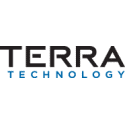Study demonstrates the value of Demand Sensing in volatile markets
 Norwalk, Conn., 2 October, 2012 – The Terra Technology Forecasting Benchmark Study, published today, reveals the effect of continued volatility on the consumer packaged goods (CPG) industry and the benefits of Demand Sensing to accurately predict demand in rapidly changing markets. Now in its third year, the study identifies forecasting trends based on activity from about one third of the North American CPG market, and provides insight into the composition of retail sales for the prior year. The benchmark includes nine multinational manufacturers that have 90,000 items stocked in 475 locations, totalling 4 billion physical cases and more than $100 billion in annual sales.
Norwalk, Conn., 2 October, 2012 – The Terra Technology Forecasting Benchmark Study, published today, reveals the effect of continued volatility on the consumer packaged goods (CPG) industry and the benefits of Demand Sensing to accurately predict demand in rapidly changing markets. Now in its third year, the study identifies forecasting trends based on activity from about one third of the North American CPG market, and provides insight into the composition of retail sales for the prior year. The benchmark includes nine multinational manufacturers that have 90,000 items stocked in 475 locations, totalling 4 billion physical cases and more than $100 billion in annual sales.
“The CPG industry faced another year of demand volatility, marked by continued economic turbulence and weak consumer confidence,” said Robert F. Byrne, president and CEO of Terra Technology. “Overall shipments remained flat and manufacturers relied more on promotions and product innovation to drive sales. These marketing activities change consumer behaviour and increase supply chain complexity. As a result, overall Demand Planning forecast error rose slightly to 53 per cent.”
Accurate forecasts are important because they form the basis of all manufacturing, procurement and inventory planning decisions, and ultimately drive overall supply chain costs. For companies under pressure to improve cash flow by cutting inventory and expenses, improving forecast accuracy is the key to safely lower stocks without risking revenue or customer service. Furthermore, the gains in supply chain efficiency help lower operating costs and offset the margin shortfalls from an increased reliance on promotions.
The benchmark study shows that Demand Sensing performs throughout the turbulence caused by volatile markets, reducing forecast error from 50 percent to only 30 percent. Demand Sensing is shown to be effective in improving forecast accuracy across many business activities, including new products, promotions and regular sales. It also dramatically reduces the instances of extreme error, where sales exceed or fall short of forecasts by two times or more. These extreme error events are the most disruptive and costly for supply chains.
Other key findings include:
- · Promotional volume increased 8 per cent in 2011; only 11 per cent of items were not promoted during the year compared to 23 per cent in 2010.
- · Manufacturers remain optimistic, consistently over-forecasting, especially for promotions and new products, where bias is 3 or more times higher.
- · New products represent one third of all items; half of all items have less than two years history.
- · Forecast error for new products over their first year is 74 per cent, up slightly from 70 per cent in 2010.
- · Over one third of all forecast volume is subject to extreme forecast error.
- · Top selling products responsible for 20 per cent of the volume represent only 2 percent of items, whereas the slowest moving products responsible for the same 20 per cent of the volume represent 80 per cent of items; these slow-moving items have a high forecast error of 73 per cent.
The benchmark results demonstrate the value of using big data and dynamic mathematics to create forecasts that adapt to changing conditions. With half of the items having less than two years of sales history, traditional seasonal forecasting models lack the basic information to make meaningful forecasts, especially in volatile markets. Demand Sensing takes a different approach, drawing on information from multiple sources in manufacturer and retailer systems, to accurately predict future demand in a way that reflects current market realities. This is a major departure from the systems which the industry has relied on for decades.
Companies participating in Terra’s Forecasting Benchmark Study receive detailed interactive reports to compare their performance to peers, as well as the performance of individual business units, brands, categories or specific items to the rest of their organization. The ability to drill down to item-level details has provided insight that has led to targeted forecast improvement programs to remove supply chain complexity, improve service and lower costs. The public version of the benchmark study captures the state of Demand Planning performance for consumer products companies, providing readers with the opportunity to compare their forecast performance with the overall CPG industry and top performing companies in the programme.
Request your copy of Terra’s Forecasting Benchmark Study.
For further information, please contact:
Paul van de Braak
Effective Communications
effective-communications@
Mary Fields
Terra Technology
mary.fields@terratechnology.
About Terra Technology
Terra Technology uses better mathematics to sense demand, optimize inventory and predict transportation and warehousing requirements for some of the world’s best-known companies including Procter & Gamble, Unilever, Kraft Foods, Kimberly-Clark, General Mills, Kellogg’s, ConAgra Foods and Campbell Soup. Terra invented demand sensing in 2002 and was the first company to use retailer data systematically to improve supply chain efficiency, enhance service, cut inventory and reduce waste. Information on how Terra enables a truly integrated supply chain can be found at www.terratechnology.com.
SOURCE: Submitted by Effective Communications






